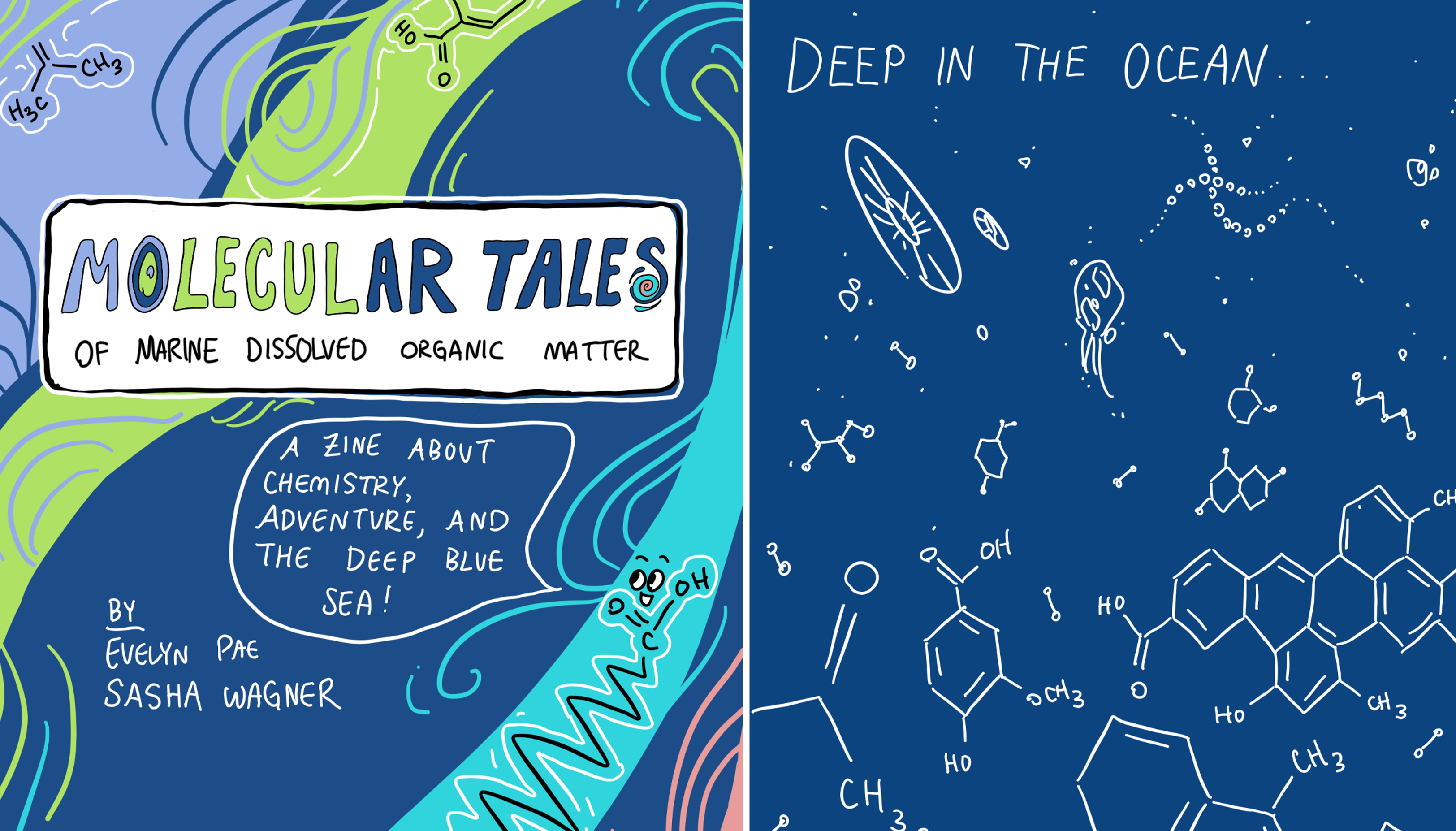By Evelyn Pae ’22, Environmental Sciences
To study chemistry is to study the art of sequential storytelling. Each step in a chemical reaction is a new progression of events: the loss of an electron, the formation of a bond, and the introduction of a catalyst. The same actors — carbon, hydrogen, oxygen, and nitrogen — dance through scene after wondrous scene, re-enacting classic sequences in labs across the nation and in innumerable natural environments.
Look deeply into an organic chemistry reaction mechanism diagram and you can see that it is like a step-by-step cartoon — a highly precise, scientific cartoon and a visualization in symbols of the elusive processes that cannot be perceived with the naked eye. It was a fascination with this type of scientific imagery that inspired me to create Molecular Tales of Marine Dissolved Organic Matter with Rensselaer Polytechnic Institute Professor Sasha Wagner, who is supervising my undergraduate research in dissolved organic matter biogeochemistry this semester. Molecular Tales, a product of chemistry nerdery and quarantine boredom, is an illustrated booklet that follows the story of four different organic molecules, each with its own provenance and character, through their respective journeys to the sea.
Professor Wagner often speaks about the importance of “getting to know” your data — becoming familiar with its various quirks as you start to understand what it has to say. Putting cute faces and speech bubbles on molecules is my way of getting to know them, depicting them and their narratives in a way that can be easily understood. We designed Molecular Tales to be read by people like me, those who may not be environmental chemistry experts, but who would like to learn more about the study of dissolved organic matter, what it is, and why it matters. We hope readers will find the information both accessible and enjoyable.
I love the idea that science can inspire art. Environmental chemistry is full of beautiful, thought-provoking imagery: shining glassware, colorful graphs, honeycombed rings of aromatic black carbon sprawling across a glossy textbook page. Scientific research is sometimes viewed as an esoteric pursuit, with new publications seeming to emerge out of the incomprehensible void behind closed laboratory doors. It’s true that science is often the search for answers to questions that don’t have obvious answers — the hunt for something that is unseen or unknown (or dissolved!). But the search itself is a story that deserves to be told.
When producing Molecular Tales, I was lucky to have access to multiple experts in the field of dissolved organic matter, including Lihini Aluwihare, Ph.D. (Scripps Institution of Oceanography); Sinikka Lennartz, Ph.D. (University of Oldenburg); Rob Spencer, Ph.D. (Florida State University); and Professor Wagner. These four scientists are included and quoted in Molecular Tales in order to show what kind of work lies behind the information used to illustrate each molecule’s tale, and I am very grateful for their contributions.
Science communication is a field that I believe will only become more relevant in the future. It doesn’t always have to be big and flashy. Like our zine, it could be a slim booklet that fits into a pocket, refusing to take itself too seriously. Or, like dissolved organic carbon itself, it could be there in the background of your daily life: always present, critical and fundamental, yet often unnoticed until you learn a new way of looking at it. I hope Molecular Tales offers readers a new — and fun — way of looking at the world we live in.




